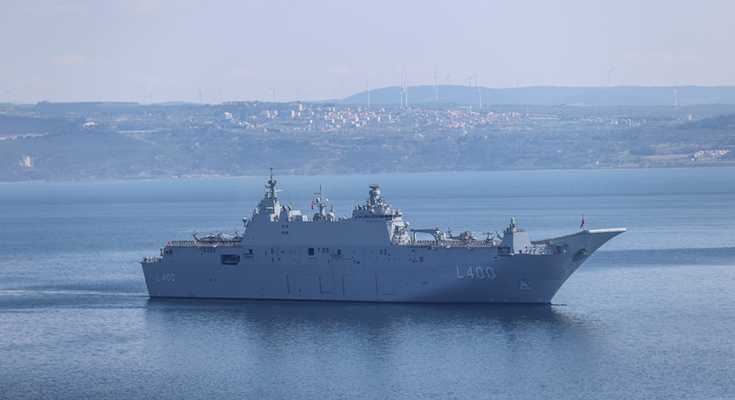From Client to Competitor: The Rise of Turkiye’s Defence Industry
This report is the first in a series on European-Turkish defense industry cooperation and published as a part of ‘National Defence Industry: From an Enabler of Turkey’s Pursuit of Strategic Autonomy to a Bridge between Turkey and Europe’, a joint project with the International Institute for Strategic Studies (IISS). The project is supported by the Centre for Applied Turkey Studies (CATS).
Authors: Sıtkı Egeli, Serhat Güvenç, Çağlar Kurç, Arda Mevlütoğlu
Executive Summary: Turkiye’s defence industry is at a crossroads, and decision-makers face a difficult choice regarding its future path. On one hand, Turkiye’s long-standing ambition to establish a self-sufficient defence industry has led to considerable industrial growth and increased Ankara’s strategic autonomy by reducing the influence of foreign suppliers. On the other hand, continued goals of self-sufficiency will become increasingly challenging and costly, particularly as the scale and sophistication of modern weaponry evolve and new competitors enter the marketplace. Although this provides an impetus for increasing industrial cooperation, the development of Turkiye’s defence industry has historically been rooted in its response to Western arms embargoes and the country’s decision-makers are strongly aware of the vulnerability of defence cooperation to foreign influence.
The international system has provided opportunities and challenges for Turkish defence industrialisation. However, to understand this process and the factors that will shape future decisions, it is necessary to consider how domestic factors such as the attitudes of leaders, a desire for strategic autonomy and the maturation of Turkiye’s nascent industry have impacted its trajectory.
Political leaders such as Mustafa Kemal Atatürk in the 1920s and 1930s, Adnan Menderes in the 1950s, Turgut Özal in the 1980s and Recep Tayyip Erdoğan since the 2000s have left their marks on Turkiye’s defence industry. In doing so, they have reflected and responded to the changing nature of the international system – ranging from acceptance of and reliance on American defence goods early on during the Cold War to a growing realisation that Turkiye needed its own defence industry in the 1960s. These ambitions were solidified after the 1974 Turkish military operation in Cyprus, when Turkish allies enforced declared and undeclared arms embargoes on Ankara. This catalysed a revamping of Turkiye’s defence-industry capabilities.
Alongside the reorganisation of the country’s domestic defence industry, the switch from import-substitution to export-driven industrialisation permitted large-scale private-sector involvement in the defence industry. Defence companies that were built from scratch in the
1980s by private-sector investors were encouraged to work with foreign partners to bring in skills, technologies and capital. This approach prompted the rise of joint ventures, which seemed to offer the best model to secure technology transfer. The Undersecretariat for Defence Industries (originally known as the Defence Industry Development and Support Administration Office and as the Defence Industry Agency since 2022) was also a major factor in the growth of the defence industry after the consolidation of much of the industry under the Turkish Armed Forces Foundation (Türk Silahlı Kuvvetlerini Güçlendirme Vakfı) in 1987.
Turkish decision-makers have come to understand that absolute autonomy is practically unattainable. Although the indigenisation of weapon systems permits many freedoms, the process also introduces different forms of dependencies. Furthermore, the ‘top-down’ strategy employed by Turkiye in establishing its defence-industrial base, going from the platform level down to components and technologies, has also faced criticism, mainly due to poor prioritisation and a lack of a coherent procedural approach.
To offset costs, Turkish defence industrialisation has become highly dependent on arms exports as it continues to indigenise and produce military technologies. Despite its booming turnover and export figures, however, the sector faces long-term challenges, including the emergence of new market competitors and an increasing rate of ‘brain drain’, especially since the late 2010s.
It is against this backdrop that Turkiye’s decision-makers face a crossroads. Although Turkiye would prefer to work with its Western allies, it is also open to cooperation with non-Western countries. This is because dependence, of varying degrees, on foreign arms suppliers could still restrict Turkiye in pursuing its national interests, especially if the policies and priorities of Ankara and its principal suppliers fail to align.
Read the full report: https://go.iiss.org/3Qs3Rpy
Disclaimers
The views outlined in this paper are exclusively those of the authors and do not represent institutional views of the CFPPR or the IISS.


